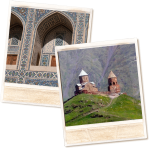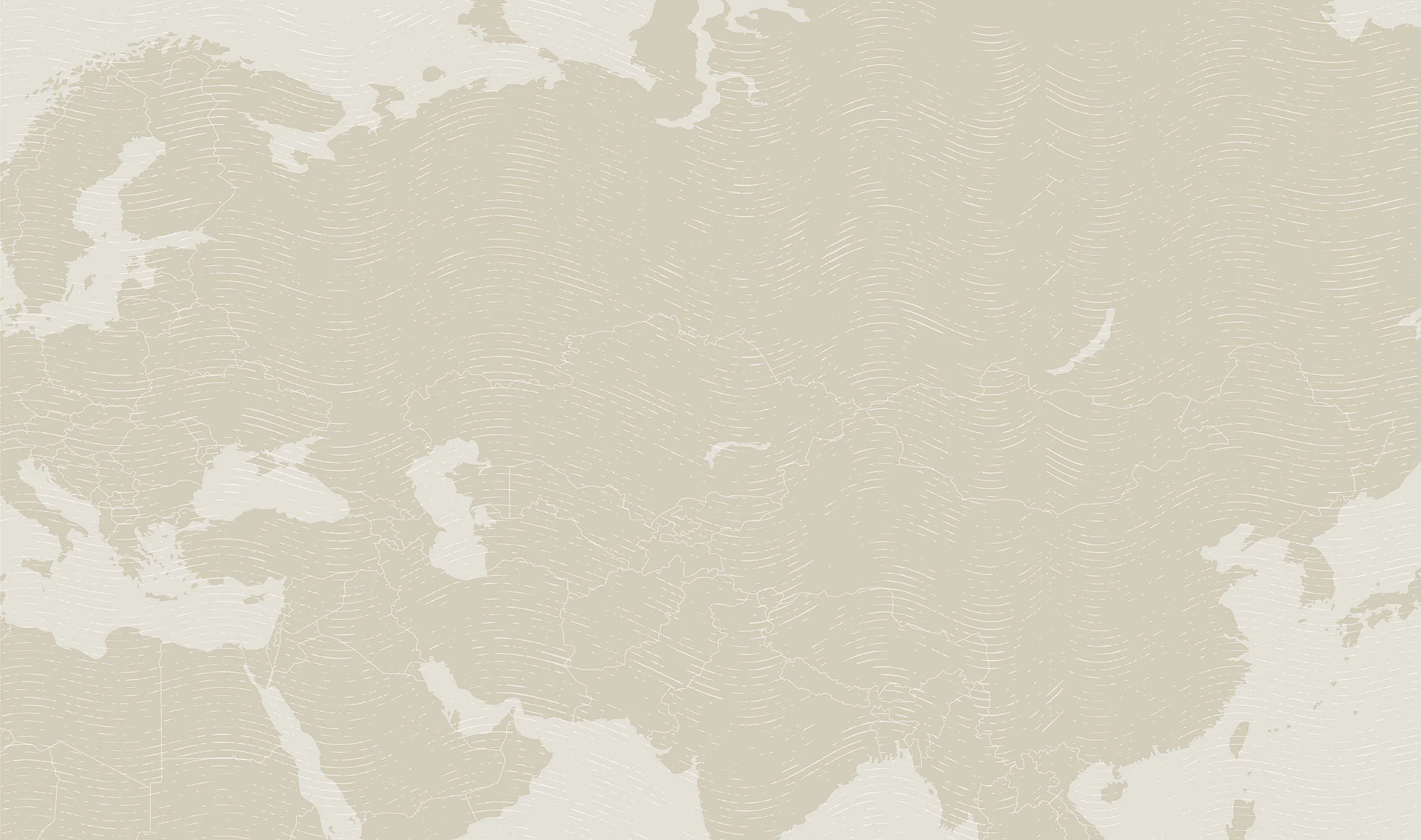Photo credit: Greg Mazzola
Journey Through South Korea’s Demilitarized Zone (DMZ)
Powerful Story of Conflict, Division, and Reconciliation
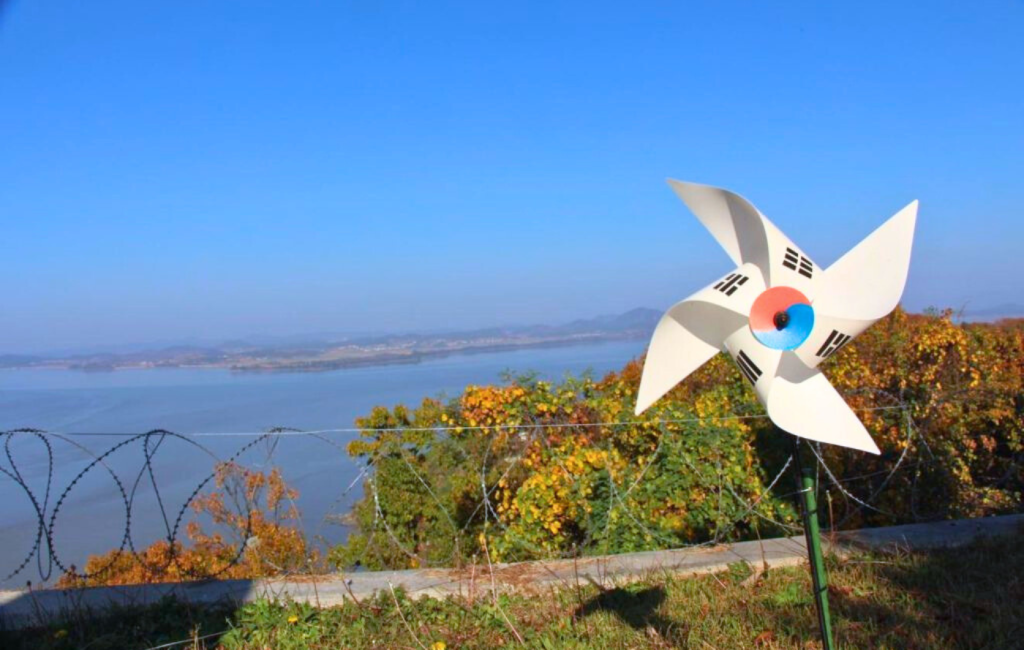
Just 30 miles north of Seoul, the road narrows toward South Korea’s Demilitarized Zone (DMZ) – the heavily fortified buffer that has divided the Korean Peninsula since 1953. Our journey began at the Odusan Observatory, perched on a bluff overlooking the Han River. Below us, barbed wire traced the low wall at our feet. Across the water, empty fields and pale buildings sat motionless beneath a haze of mountains – eerily quiet, save for the distant echo of loudspeakers floating across the divide. Sparrows and warblers flitted through the trees nearby, their cheerful calls in stark contrast to the somber mood. From this vantage point, visitors gain not only a glimpse into North Korea, but also a poignant view of a nation’s split identity – and the ongoing tension that still ripples through the region.
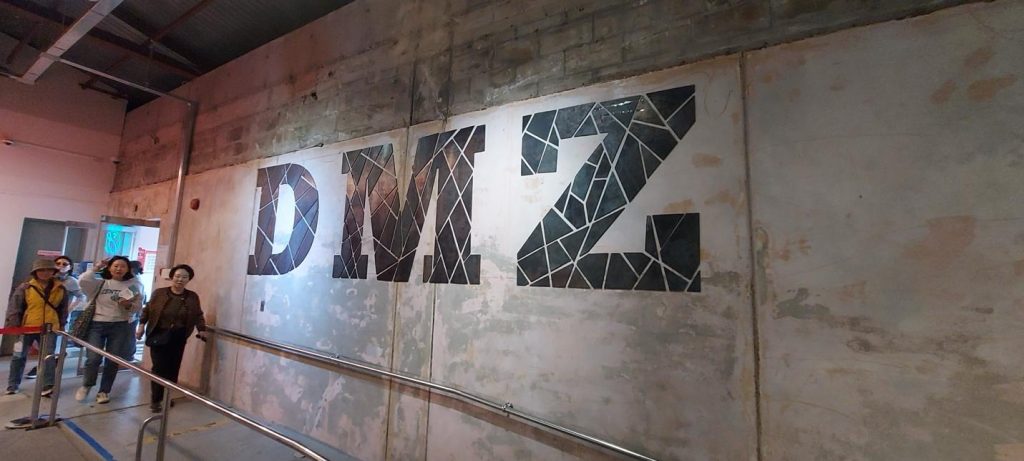
We set out early from Seoul, accompanied by my local host and driver, bound for the Demilitarized Zone. Known more simply as the DMZ, this 2.4-mile-wide buffer has divided North and South Korea since the signing of the Korean Armistice Agreement in 1953. Though just 30 miles from the capital, the journey to the DMZ can take up to 90 minutes, depending on traffic and which section you’re visiting. Today, the area draws more than a million visitors each year – both Korean and international travelers – seeking insight into the history of a nation divided, the geopolitical tensions that persist, and, perhaps unexpectedly, a destination that at times doubles as a site of leisure and family outings.
Our first stop was Odusan Observatory, where we caught a glimpse of North Korea across the Han River. Surprisingly, the area also serves as a tranquil ecological preserve, home to various birdlife. We spotted herons, flycatchers, and kingfishers throughout the day as we explored the region.
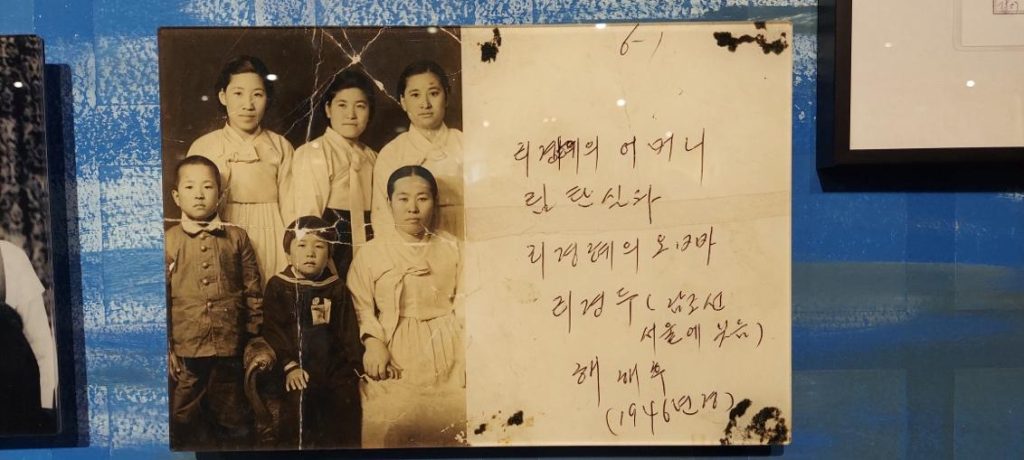
Inside the Odusan Visitor Center, visitors first engage with the human story. Hundreds of hand-painted tiles – many created by children – cover the walls, alongside historic photos of families separated by the border. Near the entrance sits the “Piano of Unification,” a symbol of the divide. Its open lid displays strings replaced by barbed wire, yet it remains a playable instrument. It is said that the sound it produces is symbolically discordant, an echo of the conflict that continues.

We continued another fifteen minutes’ drive to Imjingak Park, located where the DMZ border follows the Imjin River. It’s an odd arrival entering the gates where a family amusement park, complete with mini-cars and rocking boat rides, flanks the parking area lined with cars and tour buses. Despite the tourist-like atmosphere, delving deeper into the park reveals a thoughtful glimpse into the past.
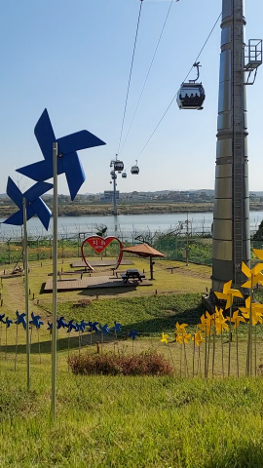
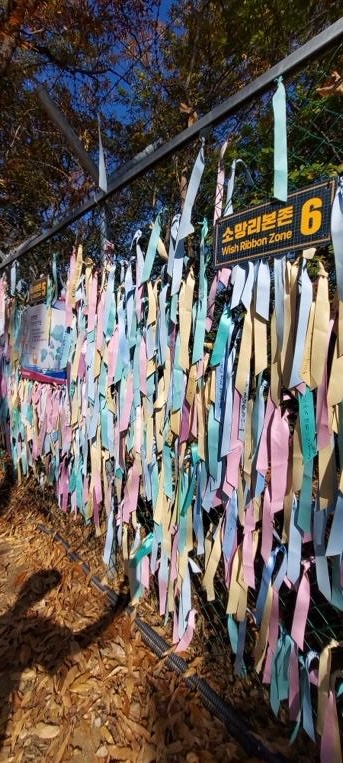

A gondola ride carried us up and over the Imjin River, gliding past fences marked with bold red and orange triangular signs reading “Mines.” Below, we passed the skeletal frame of a 12-foot heart-shaped apple sculpture. After disembarking and passing a few small cafés, a short 50-yard walk brought us to another viewpoint. Here, the “Wish Ribbon Zone” came into view – a fence adorned with thousands of colorful ribbons, each inscribed with personal messages of peace.
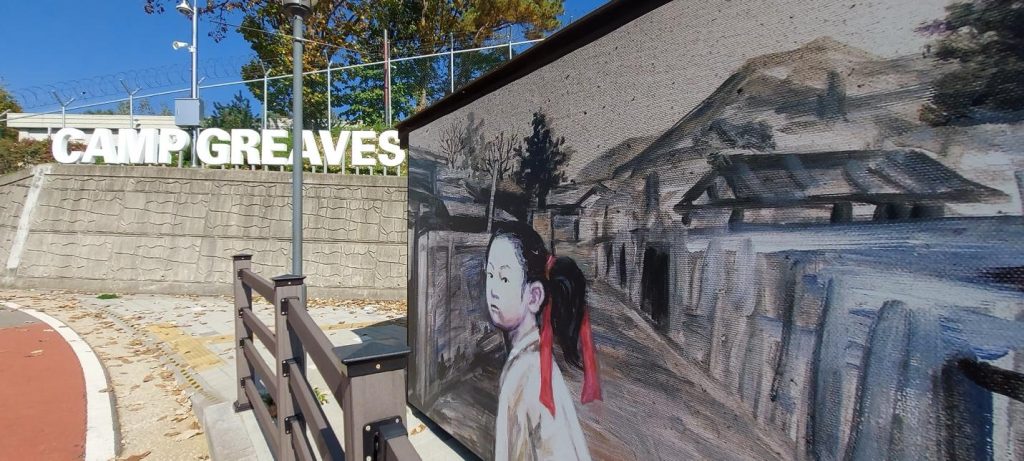
Camp Greaves was our next stop – a former U.S. Army installation now repurposed as a peace and security education site. The camp remained active until 2027, when it was returned to the Korean government. Today, the renovated grounds offer more than just a glimpse into the past. A former auto compound has been transformed into a movie studio. The old bowling alley now hosts an interpretive center. A multimedia art exhibit explores the conflict’s legacy. One story lingered with me: a letter from a teenage Korean soldier to his mother. It was filled with fear, reflections on the devastation of war, and the tension between duty and the yearning for home. A raw and personal account that captured the emotional weight shared by so many in wartime.
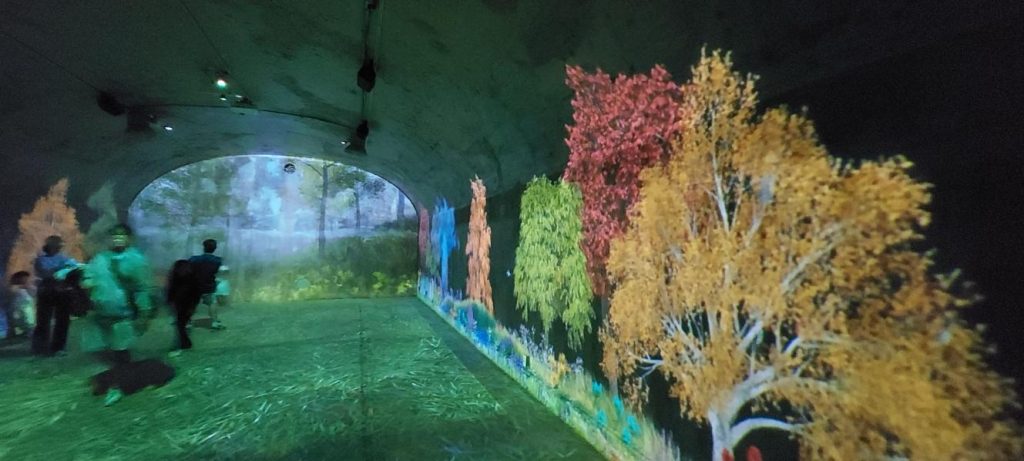
We returned by gondola to the base area and walked five minutes to the “Peace Train”. It’s a rusted, bullet-scarred locomotive that last crossed the border between North and South Korea in 1950. Standing at the edge of a collapsed bridge that once linked the two countries, the train remains a powerful artifact. It serves as both a reminder of what was lost and a symbol of what could one day reconnect the peninsula.
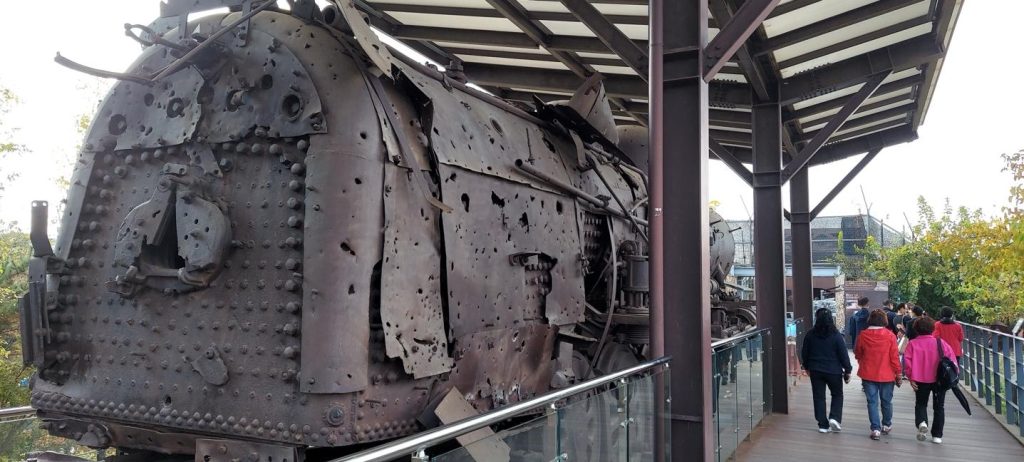
We ended the day at the infamous Third Tunnel — one of four found beneath the DMZ. It’s a stark reminder that tensions persist long after the 1953 armistice. South Korean forces discovered the tunnel in 1978. Reports suggest that the North Korean army built it as part of an effort to prepare for an invasion of the South. Officials estimate that up to 30,000 soldiers could have moved through it in a single hour.
Visiting the tunnel requires an advance reservation to board one of several 45-seat coach buses cleared to enter the zone. Once there, visitors descend a 350-meter path into the narrow tunnel, which ends at a barricade with a small window looking toward the Demarcation Line. For safety, staff provide hard hats, and anyone taller than 5 feet 9 inches should be ready to crouch in the lowest-clearance sections. Photography isn’t allowed.
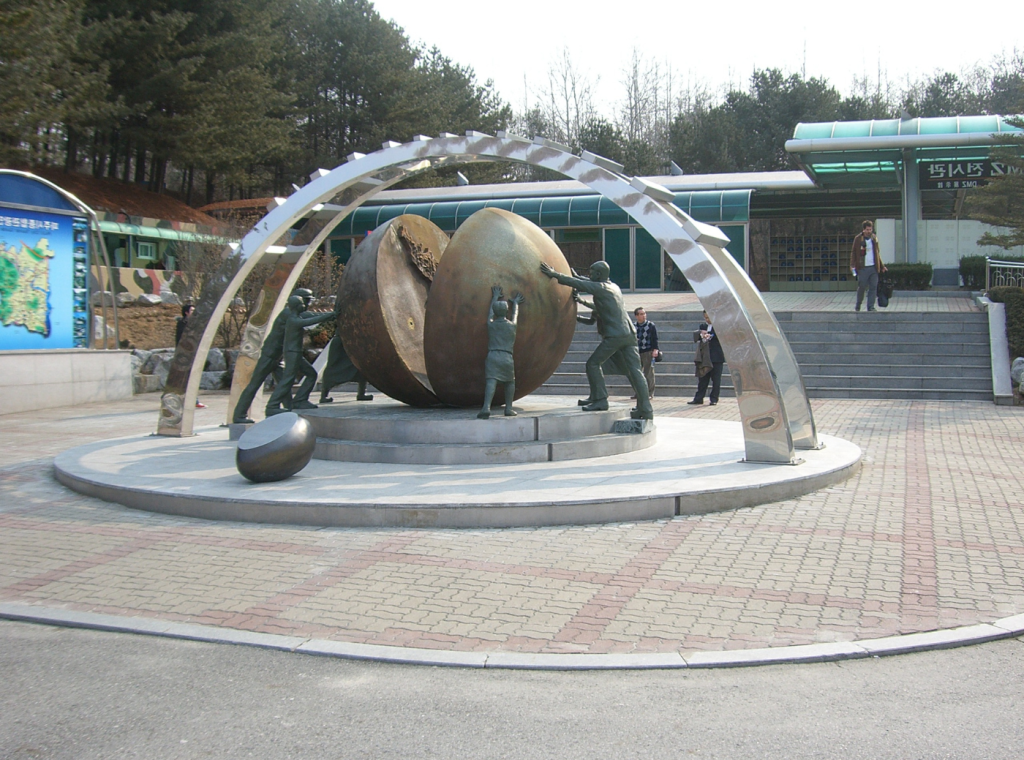
Going into my visit to South Korea’s Demilitarized Zone (DMZ), I felt hesitant about how the experience might present itself. I wondered whether it would simply be a shallow tourist attraction or an intrusive, somewhat voyeuristic look into an isolationist country. In the end, while it is indeed a tourist site, the day was both informative and poignant. The exhibits offered historical information and artifacts, complemented by numerous personal stories of families and soldiers who endured hardship. Today, the DMZ stands as an educational reminder of a tragic conflict, the ongoing process of healing, and the hope for a peaceful future.
Would you like to experience South Korea for yourself? MIR’s travel specialists are ready to help you connect with the country’s layered past and dynamic present.





